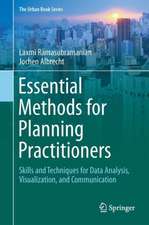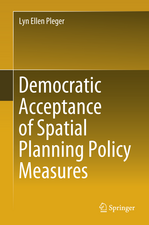Handbook of Traffic Psychology
Editat de Bryan E. Porteren Limba Engleză Paperback – 31 iul 2011
The "Handbook of Traffic Psychology" covers all key areas of research in this field including theory, applications, methodology and analyses, variables that affect traffic, driver problem behaviors, and countermeasures to reduce risk on roadways. Comprehensive in scope, the methodology section includes case-control studies, self-report instruments and methods, field methods and naturalistic observational techniques, instrumented vehicles and in-car recording techniques, modeling and simulation methods, in vivo methods, clinical assessment, and crash datasets and analyses. Experienced researchers will better understand what methods are most useful for what kinds of studies and students can better understand the myriad of techniques used in this discipline.
Focuses specifically on traffic, as opposed to transportCovers all key areas of research in traffic psychology including theory, applications, methodology and analyses, variables that affect traffic, driver problem behaviors, and countermeasures to reduce the risk of variables and behaviorContents include how to conduct traffic research and how to analyze dataContributors come from more than 10 countries, including US, UK, Japan, Netherlands, Ireland, Switzerland, Mexico, Australia, Canada, Turkey, France, Finland, Norway, Israel, and South Africa"
Preț: 963.27 lei
Preț vechi: 1013.96 lei
-5% Nou
184.48€ • 190.07$ • 154.54£
Carte indisponibilă temporar
Specificații
Cuprins
Chapter 1 - How Many E's in Road Safety?
Chapter 2 - Driver Control Theory
Chapter 3 - Case-Control Studies in Traffic Psychology
Chapter 4 - Self-Report Instruments and Methods
Chapter 5 - Naturalistic Observational Field Techniques for Traffic Psychology Research
Chapter 6 - Naturalistic Driving Studies and Data Coding and Analysis Techniques
Chapter 7 - Driving Simulators as Research Tools in Traffic Psychology
Chapter 8 - Crash Data Sets and Analysis
Part Two: Key Variables to Understand in Traffic Psychology
Chapter 9 - Neuroscience and Young Drivers
Chapter 10 - Neuroscience and Older Drivers
Chapter 11 - Visual Attention While Driving
Chapter 12 - Social, Personality, and Affective Constructs in Driving
Chapter 13 - Mental Health and Driving
Chapter 14 - Person and Environment: Traffic Culture
Chapter 15 - Human Factors and Ergonomics
Part Three: Key Problem Behaviors
Chapter 16 - Factors Influencing Safety Belt Use
Chapter 17 - Alcohol-Impaired Driving
Chapter 18 - Speed(ing)
Chapter 19 - Running Traffic Controls
Chapter 20 - Driver Distraction
Chapter 21 - Driver Fatigue
Part Four: Vulnerable and Problem Road Users
Chapter 22 - Young Children and "Tweens"
Chapter 23 - Young Drivers
Chapter 24 - Older Drivers
Chapter 25 - Pedestrians
Chapter 26 - Bicyclists
Chapter 27 - Motorcyclists
Chapter 28 - Professional Drivers
Part Five: Major Countermeasures to Reduce Risk
Chapter 29 - Driver Education and Training
Chapter 30 - Persuasion and Motivational Messaging
Chapter 31 - Enforcement
Part Six: Interdisciplinary Issues
Chapter 32 - The Intersection of Road Traffic Safety and Public Health
Chapter 33 - Public Policy
Chapter 34 - Travel Mode Choice
Chapter 35 - Road Use Behavior in Sub-Saharan Africa




























